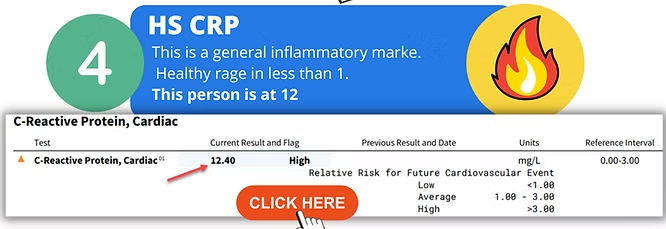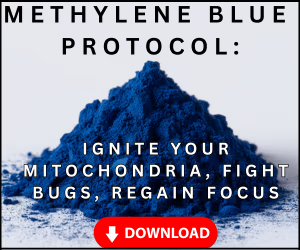These are 5 very important markers to look for on lab work to keep your brain health in check! If you are experiencing any kind of cognitive impairment, it is a good idea to check these markers as a starting place.
Before we dive in, I would recommend you initially get these markers minimally done. If any of them come back positive, then it warrants further investigation with your doctor.
1. Fasting Insulin
Insulin, as with all lab markers, has what we call a “healthy range.” For fasting insulin, that range is 2.6 to 24.9, though I prefer to see it closer to 5-6.
This patient I examined in the video had a fasting insulin level of 41. I like to describe insulin as glass shards in your bloodstream, causing all kinds of damage and causing a lot of chronic inflammation. Now this patient is at 4.8.
2. Vitamin D
Healthy levels of Vitamin D range from 30-100, though I would say the sweet spot is around 80. This same patient’s labs read at 6.3, which is ridiculously low.
Vitamin D is needed for every single cell in your body. Despite being called a “vitamin,” it is actually a hormone. So even if your doctor in the conventional system sees your levels at 35, and tells you that you are fine, in reality you need to raise your Vitamin D levels
3. Homocysteine
Homocysteine is like insulin, in that it is a marker that can tell us about your level of inflammation. Normal ranges of homocysteine go from 0 to 14.5, with a sweet spot of 5-6. The patient I examined in the video had a homocysteine level of 44.6.
Homocysteine has been linked to brain-related diseases such as Parkinson’s or Alzheimer’s disease, as well as other conditions related to neurological degeneration. Most doctors do not normally test for homocysteine, so it is important to take a look at your levels.
4. HS CRP
HS here stands for “High Sensitivity,” and CRP is “C-reactive Protein.” The typical range for HS CRP is around 0 to 3, with anything above 3 putting you at severe risk of a cardiac event. This client’s reading came in at over 12.
HS CRP is another marker of inflammation. Gathering this information in conjunction with insulin and homocysteine allows us to take a polytherapy approach to treat your conditions.
5. DHEA (the brain hormone)
DHEA is one of the most common hormones found in your body. Because it helps create other necessary hormones such as testosterone and estrogen, it is an extremely important marker when looking at brain health.
The normal range is between 30.9 and 295.6, while the sweet spot is between 176 and 225. This particular client had a level of 18.1. Low markers will indicate poor brain function and increased inflammation.
Conclusion
These markers are all simple to test for. If you are wondering how to get these labs, or how to make sense of them, please reach out to me. I am more than happy to set up a Zoom call, and I have helped people all over the world. Together we can make a polytherapy plan for your treatment.
Frequently Asked Questions (FAQ)
High insulin acts like "glass shards" in the bloodstream, causing inflammation that damages blood vessels and brain cells. The standard range is permissive; an optimal level of 5-6 minimizes this inflammatory risk.
The optimal level is around 80 ng/mL. Vitamin D is a hormone needed by every cell, and levels even in the "normal" low range (e.g., 35) are insufficient for protecting against cognitive decline and reducing brain inflammation.
Both are key markers of inflammation. High homocysteine is directly linked to neurodegenerative diseases like Alzheimer's, while high HS-CRP indicates severe systemic inflammation that increases the risk for cardiovascular events and brain damage.












